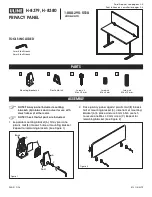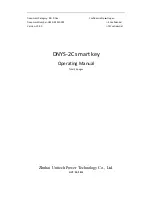
Appendix B
Configuration Aspects for Programmers
ChartScan User’s Manual
B-7
PRINT#1,"OUTPUT07; C1-4,1X"
‘ Configure master channels 1-4 with Type JTC
PRINT#1,"OUTPUT07;I00:01:00.0,00:00:01.0X"
‘ Configure normal timebase to 1 minute, acquisition timebase to 1 second
PRINT#1,"OUTPUT07;Y100,1100,0X"
‘ Set pre-trigger scan count to 100 and post-trigger to 1100 scans
PRINT#1,"OUTPUT07;T1,8,0,0X"
‘ Configure start event to trigger on command and stop event to stop post-
trigger count.(TRIGGER LED should pulse)
PRINT#1,"OUTPUT07;@X"
‘
Trigger the acquisition. Acquisition scans should now be collected until
1100 post-trigger scans have been collected. (TRIGGER LED should be on)
Channel Configuration
Configuring a channel is the process of describing the channel transducer to ChartScan. By doing so, the
configured channel becomes part of the channel scan.
ChartScan performs calculations on the raw voltage before supplying it to the controlling computer. To perform
such calculations, ChartScan must know the transducer type.
ChartScan and its optional expansion chassis can each accept from 1 to 4 signal-conditioning modules. With
eight modules possible (each with 16 channels) the system can scan up to 128 channels. Note that the eight
modules can be comprised of any combination of the following:
Signal-Conditioning Modules
Module
Type
Inputs
Connector
CSN14/TC/P
Thermocouple (T/C) and
Voltage
J, K, T, E, R, S, B, and N; or for
±100 mV, ±1 V, ±5 V, and ±10 V
Subminiature Plug
CSN/14/LV/T
Voltage
±100 mV, ±1 V, ±5 V, and ±10 V
Screw Terminal
CSN/14/LV/B
Voltage
±100 mV, ±1 V, ±5 V, and ±10 V
BNC
CSN/14/LV/S
Voltage
±100 mV, ±1 V, ±5 V, and ±10 V
Safety Jack
CSN/14/HV/S
High Voltage
±2.5 V, ±25 V, and ±250 V
Safety Jack
The modularity of ChartScan eliminates the need for synchronizing separate and possibly incompatible analog-
to-digital (A/D) measuring instruments or boards, which is an important consideration because many
temperature measurement systems require a combination of thermocouples and analog inputs.
ChartScan is capable of sensing the signal conditioning module types that are plugged into each of its four signal
conditioning module slots, as well as the four module slots of the expansion chassis.
If you attempt to configure a channel number that is of the wrong type or does not exist, a
channel configuration error will be logged in the Error Source Register.
Associated with each channel is the channel number and type and (optionally) the high and low
alarm setpoints and the
setpoint hysteresis
.
The minimum channel configuration required is a
channel type assigned for a single channel or a range of channels.
The following text describes how to configure the possible channel types for each signal-conditioning card
accepted by ChartScan and the expansion chassis. Alarms are covered later in this appendix.
Summary of Contents for OMB-CHARTSCAN 1400
Page 1: ...August 2002 OMB CHARTSCAN 1400 Portable Data Recorder p n OMB 483 0901 Rev 3 1...
Page 6: ...iv ChartScan User s Manual...
Page 24: ...ChartScan User s Manual...
Page 32: ...2 8 General Information ChartScan User s Manual Notes...
Page 56: ...3 24 ChartScan User s Manual Notes...
Page 124: ...6 20 Calibration ChartScan User s Manual...
Page 126: ...A ii ChartScan User s Manual...
Page 136: ...API Commands Appendix A A 10 ChartScan User s Manual Notes...
Page 176: ...API Commands Appendix A A 50 ChartScan User s Manual...
Page 230: ...Appendix C Registers Data Formats Queries ChartScan User s Manual C 13...
Page 237: ...Registers Data Formats Queries Appendix C C 20 ChartScan User s Manual Notes...
Page 257: ...E 2 ChartScan User s Manual Notes...
Page 265: ...ASCII Code Summary Appendix F F 8 ChartScan User s Manual Notes...
Page 269: ...Abbreviations Appendix H H 2 ChartScan User s Manual Notes...
Page 271: ...ChartScan User s Manual...
















































